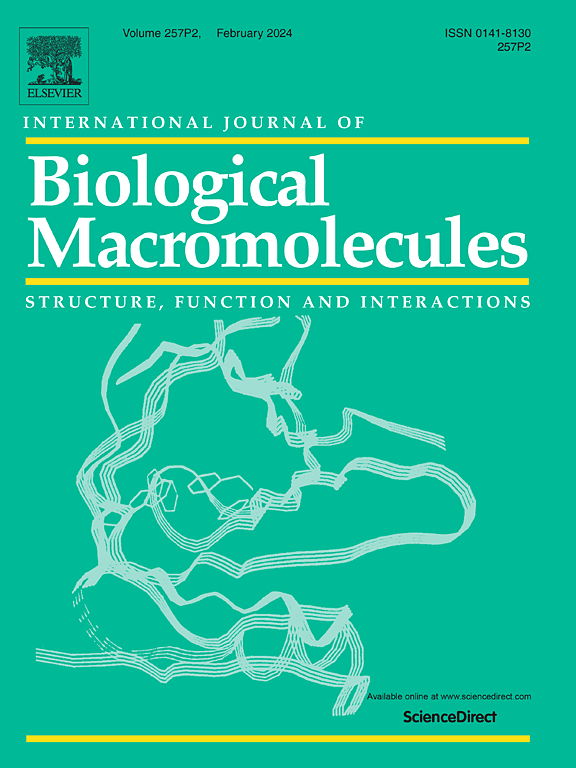Extraction methods, structural diversity and potential biological activities of Artemisia L. polysaccharides (APs): A review
IF 7.7
1区 化学
Q1 BIOCHEMISTRY & MOLECULAR BIOLOGY
International Journal of Biological Macromolecules
Pub Date : 2025-04-02
DOI:10.1016/j.ijbiomac.2025.142802
引用次数: 0
Abstract
The extraction and structural characterization of polysaccharides are challenging in plants with overlapping distributions such as Artemisia, the plant genus producing antimalarial drug artemisinin discovered by the Nobel Prize 2015 winning Professor Tu You-you. The diversity in Artemisia polysaccharides (APs) is due to difference in extraction methods leading to different bioactivities. In spite of that, APs utilization is decelerated due to lack of a review portraying current advancements. This review delivers data on extraction, structural characterization and bioactivities of APs with emphasis on mechanisms of action and structure-function relationships. Outcomes indicated that various polysaccharides in 16 Artemisia species were reported and comprehensively described. The common methods for preparing APs were hot water and microwave assisted extractions with maximum yield. Maximum plant parts used to extract APs include leaves, aerial part, whole plant and seeds. The APs presented varying molecular weight, monosaccharide composition, carbohydrates, proteins, uronic acids and phenolic content with around 20 bioactivities. Data on structure-function relationships indicated that the bioactivities of APs are highly correlated with the differences in Mw and monosaccharide's type. While Artemisia species discussed here are the most studied species for their polysaccharides, other Artemisia species may offer unique polysaccharides with distinct biological properties; hence, the future research could focus on expanding the scope of species studied. Broader investigations are also needed specifically on the structure-function relationships of APs with the elucidation of impact of unknown factors on their efficacy.

蒿多糖(APs)的提取方法、结构多样性和潜在生物活性:综述。
本文章由计算机程序翻译,如有差异,请以英文原文为准。
求助全文
约1分钟内获得全文
求助全文
来源期刊
CiteScore
13.70
自引率
9.80%
发文量
2728
审稿时长
64 days
期刊介绍:
The International Journal of Biological Macromolecules is a well-established international journal dedicated to research on the chemical and biological aspects of natural macromolecules. Focusing on proteins, macromolecular carbohydrates, glycoproteins, proteoglycans, lignins, biological poly-acids, and nucleic acids, the journal presents the latest findings in molecular structure, properties, biological activities, interactions, modifications, and functional properties. Papers must offer new and novel insights, encompassing related model systems, structural conformational studies, theoretical developments, and analytical techniques. Each paper is required to primarily focus on at least one named biological macromolecule, reflected in the title, abstract, and text.

 求助内容:
求助内容: 应助结果提醒方式:
应助结果提醒方式:


